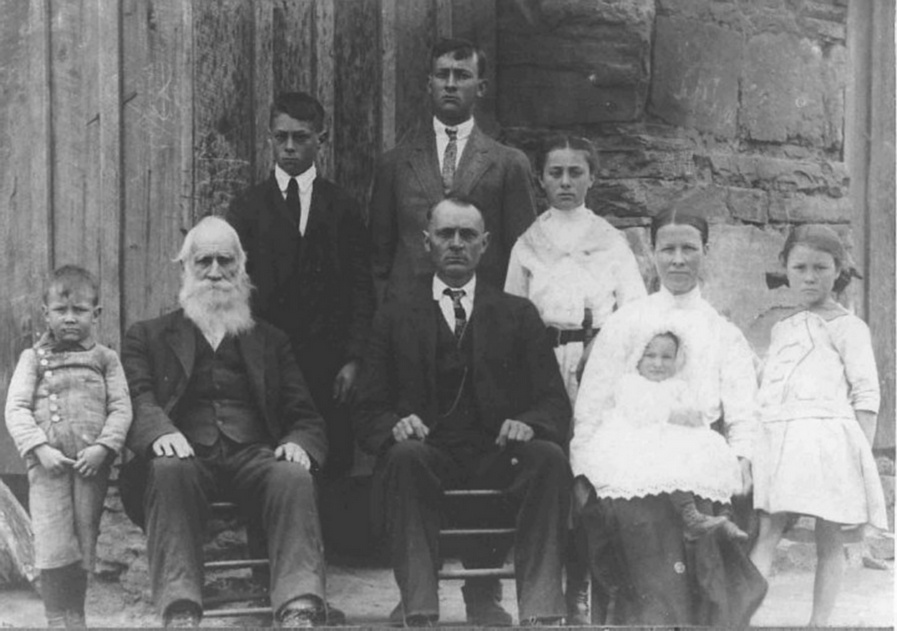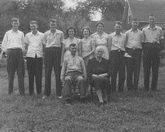|
Is Centennial Church
Year?
Mr. J. M. Hamlin
Writes About the Founding of Local
Churches
Mr. Editor:
Some writers have said
of North Carolina that she is continually
making history worth reading, but slow to
preserve it. If that remark is truly
applicable to the State as a whole it is
applicable to each part unlesss exceptions can
be shown. Transylvania can hardy prove an
alibi. Our history so far is
unwritten. Outside official records we
are dependant on tradition. What we may
have learned of ecclesiastical, social,
economic, industrial and educational
development is largely from traditional
fragments. It may be the various churches
are preserving records of denominational
progress, but apparently making no efforts to
make known the facts.
Take Presbyterianism,
for instance the non-afflicted know nothing
certainly of the actual fact attending the
origin and early planting of Presbyterianism in
this county. It has been handed down
traditionally that about a century ago, Rev.
Ephriam Bradshaw, D. D., was pastor of a
Presbyterian Church at Davidson River; that the
Davidsons, Pattons, Claytons, Orrs, Neils and
Younges were members of this flock.
Whether or not he was the first pastor, we do
not know, but was the first, perhaps, who
impressed himself upon the reats of the people
not to be obliterated in a century.
Methodism was
introduced early in the ninth
century. Perhaps Mrs. Sarah Paxton,
daughter of General Charles McDowell, who
settled at the Cherry Fields, if not the first,
was among the first Methodists of Upper French
Broad. The Beaslys, lances of East Fork
and Vandan Loftis of Dunns Rock with her and
her daughters constituted the first class;
Haddens, Shuford, and others at Pine
Grove. Preaching services for some time
were held in private dwellings: Billie Wilson's
house near Wilson's bridge and Benjamin
Wilson's at Selica were favorite meeting
places. Rev. B. H. Merrimon was among the
first assigned to this circuit whic then
embraced large territory. The class
(as these local divisions were then called) at
the Cherry Fields built a chapel near where Oat
Bryson now lives, known for many years as
merrimon's meeting house. During this
pastorate, Mr. Merrimon married Miss. Paxton
and. it seems. retired from conference, but
continued to preach in his chapel. During
this local ministration his first born son,
Augustus, was born - the only native
Transylvanian that ever reached the United
States Senate.
Episcopalianism came
to us about 65 or 70 years ago by resort
immigration from Charleston, S. C. Most
of them bought and tilled large farms from the
Everett farm up the river to Co Paxton's
place. In a central point among
themselves they built the church St. Paul in
the Valley. Parson Hankle was rector up
to the war between the States. The war
dealt a heavy blow to the progress of this
church. Since reconstruction te rallying
point has been at Brevard with a constituency
more cosmopolitan in origin.
With the Baptists,
this is a centennial year; but not a word has
been uttered publicly of the fact. It is
a matter of record that the Baptist cause
became formally an permanently organized in the
constitution of Cathey's Creek church, which
took place July 22, 1822. The territory
embraced in the constituency of this church is
identical with the present county limits - the
field of one church in 1822 is the field of the
Transylvania Association in 1922.
Previous to this time
the above field was regarded as a mission
station under the surveillance of French Broad
church, now of Henderson county, having Rev.
Benjamin King as spiritual leader. For
several years he preached in private dwellings,
rotating from Francis Allison's, near Penrose
via. Samuel Kings, John Nicholson's, Robert
McMinn's to John C. Galloway's, near Old
Toxaway. Why some time in summer he
preached under a large spreading poplar tree on
Esq. Paxton's farm. Under this tree a
revival was held; the following were baptized:
Sallie Gillespie, Betsie Reed, Peggy Hooper,
Jonathan Siniard, Peggy Siniard, John Aiken,
John Galloway, Jr., Betsie Galloway, Vicey
Nicholson, Sallie Aiken.
A revival was held at
Robert McMinn's; the following joined: Peggy
Davis, Wm. Gillespie, Robert H. Gillespie, Anna
Owen, Pheba Burrel, Hannah Nern, Joshua Scalf,
Isaac Trammel, Wm. Galloway, Surry Galloway,
Esther Glazener, Surry Glazener, David Hadden
and Millie Gillespie.
The mission built a
meeting house in 1819, which was placed on a
pretty eminence near the present residentce of
J. A. Mull, supposed to be the central point
between Penrose, East Fork, Toxaway (rather
Cane Break) and Goucester. At this house,
or one built soon after, near the place of the
present Cathey's Creek church, the permanent
organization took place.
In looking over the
last century, the writer was impressed that the
readers of the News, as well as himslef, knew
too little of the genesis of things relating to
the history of our county. That history,
commendable history has been made is not
egotistical for any son to claim. The
churches and other enterprises have made
progress, we see and proudly realize.
How, by whom, what were the incentives to
action, what obsticles overcome? - of these we
have little authentic knowledge. let
honor be to him to who honor is due. I
opine we are passing to the century mark of
Presbyterian, Methodist, and Baptist
advancement without recognition. It ought
not to be silently passed by. Why not
have enthusiastic centinnial gatherings
formulate, read, print and file in the archives
the record of one hundred year's struggle, made
by our fathers and mothers for denominational
foothold and resussitate the nmes of those who
wrought gloriously through the heat of the
day? Why not?
- J. M.
Hamlin
added 04 January 2004 by
LHR
|






